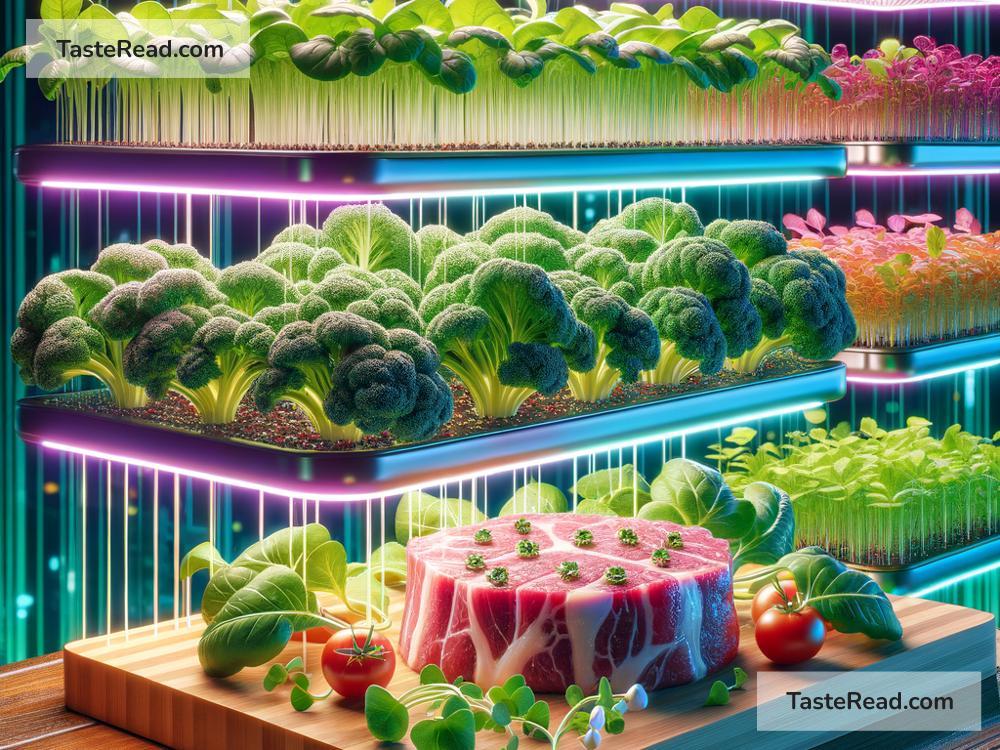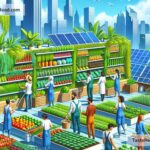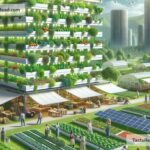The Future of Food: Adapting to a Changing Climate
Have you ever stopped to think about where the food on your plate comes from? Farmers grow crops, fishermen catch seafood, and animals are raised for meat and dairy. But did you know that climate change is threatening all of these activities? Rising temperatures, shifting rainfall patterns, and unpredictable weather are making food production more challenging every year. As the planet warms, we need to explore new ways to adapt and ensure that everyone has enough to eat.
In this article, we’ll dive into what the future of food might look like in the face of climate change — and why it’s important for everyone to work together to tackle these challenges.
How Climate Change Affects Food Production
Climate change doesn’t just mean hotter days. It causes a ripple effect across ecosystems and agriculture. Here are some key ways it impacts the food we grow and eat:
-
Extreme Weather Events: Floods, droughts, hurricanes, and heatwaves are becoming more frequent and severe. These events can destroy crops, kill livestock, or disrupt supply chains. For example, a drought in one country can lead to poor harvests of wheat or rice, affecting global food prices.
-
Changing Growing Seasons: Farmers rely on predictable seasons to plant and harvest crops. But as temperatures rise, seasons are shifting, making it harder to know when to grow certain foods. Some crops might no longer thrive in areas where they used to grow well.
-
Pests and Diseases: Warmer weather allows pests and diseases to spread to new regions. This puts crops and animals at greater risk, reducing food availability and increasing costs.
-
Loss of Biodiversity: Climate change is causing plants and animals to lose their habitats. This can affect wild food sources like fish, mushrooms, and berries, and impact local communities that depend on them.
Thinking Ahead: Innovations for Climate Adaptation
The challenges posed by climate change may seem overwhelming, but there’s good news! Scientists, farmers, and innovators around the world are working on solutions to adapt. Here are some exciting ways the future of food is taking shape:
-
Climate-Resilient Crops: Researchers are developing crops that can survive in extreme conditions, such as drought-resistant maize or salt-tolerant rice. These crops will allow farmers to grow food even in areas hit hard by climate change.
-
Vertical Farming: Imagine growing food in tall buildings instead of big fields. Vertical farms use less land and water, and they can be controlled to create the perfect conditions for crops year-round. Plus, they can be set up in urban areas, meaning fresh produce is closer to where people live.
-
Alternative Proteins: Raising livestock for meat requires a lot of land, water, and energy. To reduce its environmental impact, innovators are creating meat alternatives like plant-based burgers or lab-grown meat. Insects are another promising protein source — they’re nutritious, sustainable, and already eaten in many parts of the world.
-
Smart Technology in Farming: Farmers are using drones, sensors, and artificial intelligence to monitor crops and soil health. These tools help them apply water or fertilizer more efficiently, reducing waste and improving yields.
-
Aquaponics and Sustainable Fisheries: Aquaponics combines fish farming with growing plants. Waste from the fish provides nutrients for the plants, while the plants help filter the water for the fish. Sustainable techniques like this can protect fish populations while providing seafood.
Local Solutions for a Global Problem
While global innovations are critical, small-scale local efforts play a big role in adapting to climate change. Communities are finding creative ways to grow food, reduce waste, and support farmers. For example:
-
Urban Gardens: Cities are using rooftops and vacant lots to grow vegetables and fruits. These gardens create green spaces, improve food security, and reduce the impact of rising food prices.
-
Seed Banks: Seed banks store seeds of traditional crops, helping preserve varieties that may be lost due to changing climates.
-
Reducing Food Waste: About one-third of the world’s food is wasted each year. Reducing waste is one of the easiest ways to ensure more people have enough to eat.
Working Together for the Future of Food
Climate adaptation is not just about farmers or scientists — it’s about us, too. We can make choices that support a sustainable food system. Here are some ways you can help:
- Eat more plant-based or local foods. This reduces the energy and resources needed to transport food.
- Support businesses that invest in sustainable farming or food technologies.
- Advocate for policies that protect farmers, ecosystems, and food supply chains.
A Shared Responsibility
The future of food is uncertain, but one thing is clear: We all have a role to play in adapting to climate change. From scientists creating innovative solutions to families choosing sustainable food options, every action makes a difference. By working together, we can ensure that future generations not only have enough to eat but can also enjoy the rich diversity of dishes and flavors that make life so special.
The challenges are big, but so is humanity’s ability to adapt and innovate. Let’s tackle this together!


